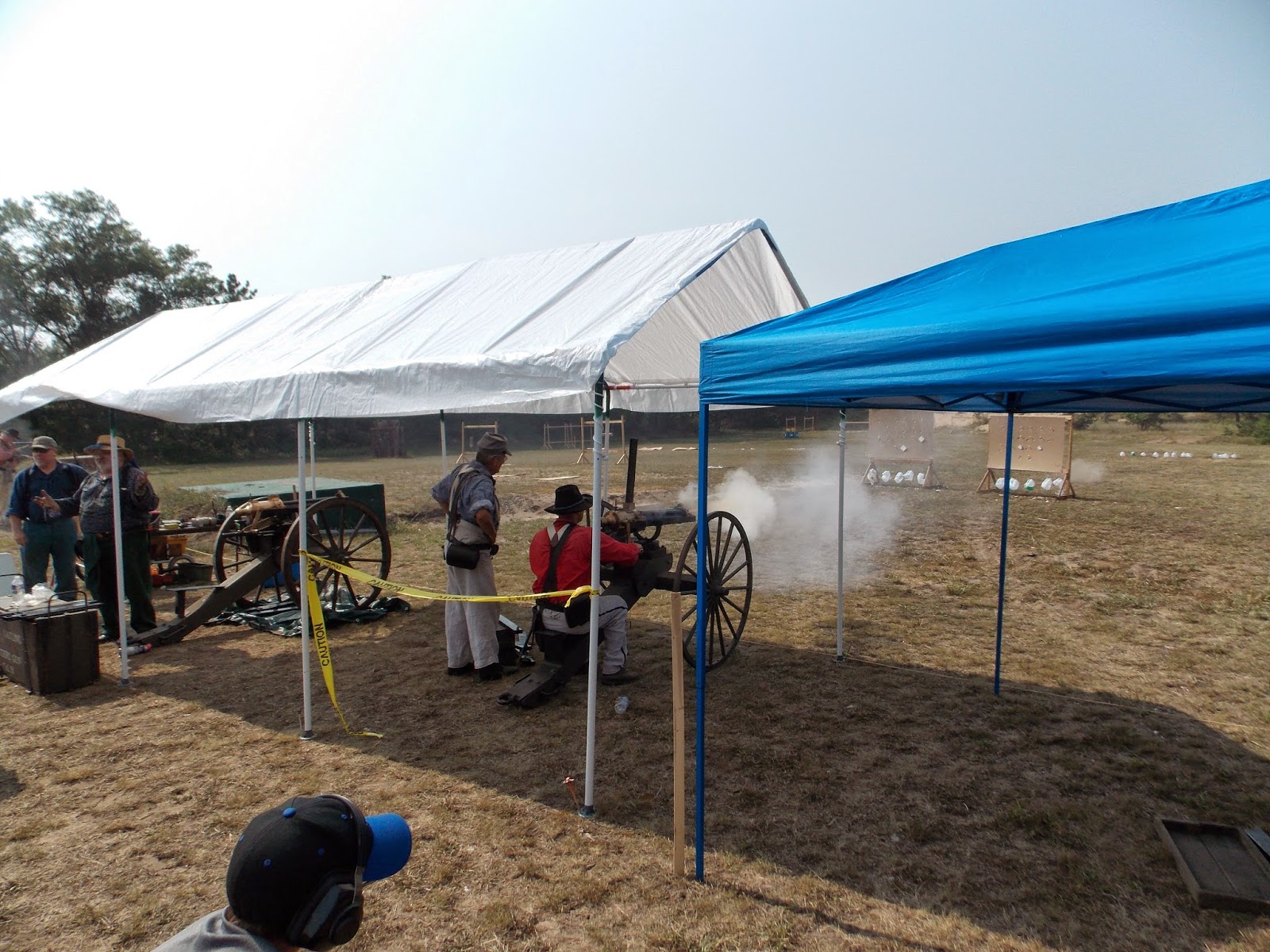The Civil War has long been a passion of mine and has grown on me even more so since moving down to the USA. In the same way that we study ancient martial arts and swordcraft I believe it is important to study the generals of past wars. If you want to become a better fighter than there are few better people to look at than the warriors of the Civil War.
Our mortar explodes into flames and fury against the Union.
Robert E Lee's aggression during the Seven Days Battles where his unrelenting ferocity caused McClellan to hesitate and ultimately retreat. Ulysses Grant's dogged determination to keep advancing in the Overland Campaign despite tactical loses to win a strategic victory. William Sherman was a master of maneuver warfare as he demonstrated in the Atlanta campaign.
Learning from these heroes of the past, Union and Confederate, can shape the way that modern fighters approach combat. Whether you are a mixed martial artist grinding your way to a strategic victory or in a street fight using wild aggressive to stave off a superior enemy these are lessons that the Civil War teaches. Good fighters train hard and study technique. Great fighters also study the past. Every boxer will watch Mohammed Ali, Mike Tyson, Sugar Ray Leonard, etc... We can also take similar lessons from the wars of old.
ACWSA shooters sending real ammo into targets.
What I learned: Battles are team efforts and working as a unit is what drives success. Sure, I had had this lesson before in a number of different formats but never as clearly as when I was crewing on either the Union or Confederate guns. Thinking back to playing Airsoft or LARPing, working together was important but there was also an individual element of success. You could lose your team yet still "go it alone" although you were at a severe handicap. Crewing a cannon or mortar you needed to work together like a well-oiled machine.
On the first day I was fighting with the Union and was stationed on the right flank of the army. In comparison to those around us I was working on a reasonably light gun. The 9 pound Howitzer felt underpowered next to the larger guns around that stretched the length of the field. I don't mind admitting that I was suffering a small amount of envy that my gun wasn't "big enough." Suddenly, Confederate Cavalry swept over the hills and raced towards our lines. Thankfully, they were intercepted by Union cavalry before overrunning us.
Our 9 pounder blazing away.
However, I saw the advantage of our smaller gun on the flank. Able to pivot quickly we might have been able to discharge a round of canister shot. Just like in a modern street fight warriors need to be able to adapt quickly to change. By placing the lighter guns on the sides armies could pivot or "deny the flank" greatly increasing a the chance of surviving an encounter. The greatest damage to an army came when panic set in and they were rooted in disorder. In a fight today, denying that flank is equally important pointing to another great lesson to take from the civil war.
In the end it wasn't my gun that was small. Rather, I was the one being petty and small-minded at not seeing the bigger picture. It is a lesson I won't soon forget.
We work as a team to blast the Confederate lines.
What was Awesome: One of my projects is the "Fighter's Eyes" video series on Youtube where I get to show what it is like to actually be in a fight. One of the hardest and most painful tasks I have is deciding what goes into the video and what has to be cut due to length and flow. In order to keep my videos to under 10 minutes I often have to cut out great footage.
Gatling gun chewing apart targets down range.
This was the case with the demonstrations put on with the American Civil War Shoot Association (ACWSA). The ACWSA is a group dedicated to the firing of historic and replica weapons. After a day on the battlefield we went to go check out the exhibitions of skill and to see real munitions fired. The ACWSA discharged a variety of weaponry including cannons, carbines and Gatling guns.
It was fantastic to see these ancient weapons actually come to life and it gave you an entirely new perspective on them. Watching a cannon rip through barrels and explode against the back of the range was amazing. I actually had the privilege of firing a Gatling gun and it was wild. Pushing the crank around and blasting round after round down range was impossibly fun and really got me thinking on the challenges faced by soldiers in the civil war.
ACWSA cannon booms on the range.
You can see the impact of the cannon ball after passing through a barrel.
Re-enacting is like any community out there, they want people to participate. They will loan you gear to start and then you can purchase your own pieces. This gets you started and when you are in a position to do so you help the next generation of reenactor, like those before helped you.
Myself, my wife and friend dressed for battle courtesy of the 9th Virginia Cavalry.
Best regards and keep training,
If you are interested in training together I would love to get together with you. Drop me a line on facebook and we can connect. I would love to learn from you.
On Facebook: https://www.facebook.com/pages/Travelling-Ronin/583588935029877?ref=hl
On check the video of my experience with the Civil War: Battle of Peachtree Creek
Check out the home of the 9th Virginia Calvary: http://www.9thvirginiacavalry.com/
The ACWSA can be found here: http://www.acwsa.org/















